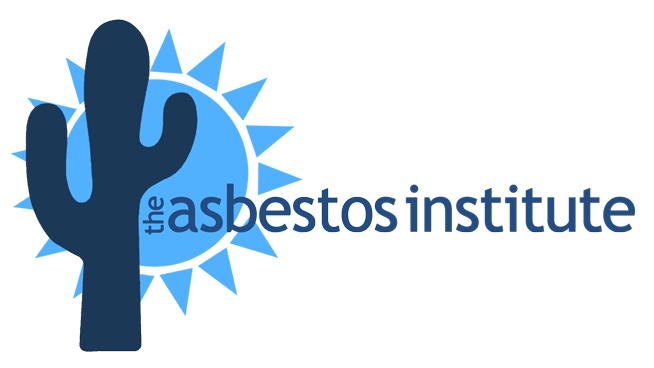Here is the Mayo Clinic’s definition of asbestosis:
Asbestosis (as-bes-TOE-sis) is a chronic lung disease caused by inhaling asbestos fibers. Prolonged exposure to these fibers can cause lung tissue scarring and shortness of breath. Asbestosis symptoms can range from mild to severe, and usually don’t appear until many years after continued exposure.
Asbestos is a natural mineral product that’s resistant to heat and corrosion. It was used extensively in the past in products such as insulation, cement and some floor tiles.
Most people with asbestosis acquired it on the job before the federal government began regulating the use of asbestos and asbestos products in the 1970s. Today, its handling is strictly regulated. Acquiring asbestosis is extremely unlikely if you follow your employer’s safety procedures. Treatment focuses on relieving your symptoms.
The effects of long-term exposure to asbestos typically don’t show up until 10 to 40 years after initial exposure. Symptoms can vary in severity. Asbestosis signs and symptoms may include:
- Shortness of breath
- A persistent, dry cough
- Loss of appetite with weight loss
- Fingertips and toes that appear wider and rounder than normal (clubbing)
- Chest tightness or pain
If you have a history of exposure to asbestos and you’re experiencing increasing shortness of breath, talk to your doctor about the possibility of asbestosis.
Causes
If you are exposed to high levels of asbestos dust over a long period of time, some of the airborne fibers can become lodged within your alveoli — the tiny sacs inside your lungs where oxygen is exchanged for carbon dioxide in your blood. The asbestos fibers irritate and scar lung tissue, causing the lungs to become stiff. This makes it difficult to breathe.
As asbestosis progresses, more and more lung tissue becomes scarred. Eventually, your lung tissue becomes so stiff that it can’t contract and expand normally.
Smoking appears to increase the retention of asbestos fibers in the lungs, and often results in a faster progression of the disease.
Risk factors
People who worked in mining, milling, manufacturing, installation or removal of asbestos products before the late 1970s are at risk of asbestosis. Examples include:
- Asbestos miners
- Aircraft and auto mechanics
- Boiler operators
- Building construction workers
- Electricians
- Railroad workers
- Refinery and mill workers
- Shipyard workers
- Workers removing asbestos insulation around steam pipes in older buildings
Risk of asbestosis is generally related to the amount and the duration of exposure to asbestos. The greater the exposure is, the greater the risk is of lung damage.
Secondhand exposure is possible for household members of exposed workers, as asbestos fibers may be carried home on clothing. People living close to mines may also be exposed to asbestos fibers released into the air.
In general, it’s safe to be around materials that are made with asbestos as long as the asbestos fibers are contained. This prevents them from getting into the air and being inhaled.
Complications
If you have asbestosis, you’re at increased risk of developing lung cancer — especially if you smoke or have a history of smoking. Rarely, malignant mesothelioma, a cancer of the tissue around the lung, can occur many years after exposure to asbestos.
Prevention
Reducing exposure to asbestos is the best prevention against asbestosis. In the United States, federal law requires employers in industries that work with asbestos products — such as construction — to take special safety measures.
Many homes, schools and other buildings built before the 1970s have materials such as pipes and floor tiles that contain asbestos. Generally, there’s no risk of exposure as long as the asbestos is enclosed and undisturbed. It’s when materials containing asbestos are damaged that there’s a danger of asbestos fibers being released into the air and inhaled.
Source: https://www.mayoclinic.org/diseases-conditions/asbestosis/symptoms-causes/syc-20354637
The Asbestos Institute has provided EPA and Cal/OSHA-accredited safety training since 1988. From OSHA 10 to hazmat training and asbestos certification, our trusted and experienced instructors make sure participants get the high-quality initial and refresher training they need.
Classroom
We train on-site at our headquarters in Phoenix, AZ or at our clients’ sites across the U.S. We offer both English and Spanish courses. Browse Classroom Classes
Online
Online courses allow you to align your learning with your personal schedule. This is a great option for students with family and work commitments. Browse Online Classes
Webinar
Live webinars allow you to watch instructors on demand from the comfort of your home or office. Learn, chat with other students, and ask questions in real-time. Browse Live Webinars
Disclaimer
The Asbestos Institute is not the official authority to determine OSHA training requirements, which are set forth in the Occupational Safety and Health Act of 1970. OSHA regulations are always being revised, added, and/or deleted, so you must not rely on The Asbestos Institute as the official authority of OSHA asbestos training requirements. Visit the official OSHA Asbestos Training Requirements page here.


